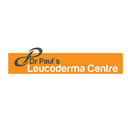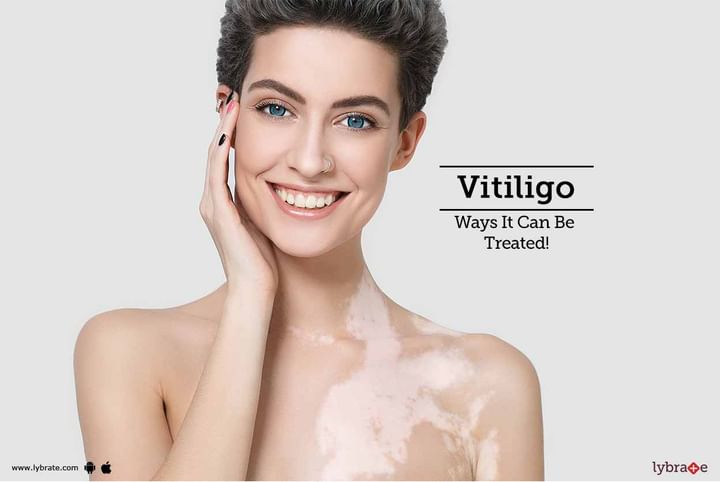Best Vitiligo Treatment - Medical & Surgical Methods
Vitiligo is a disease that results in the loss of skin colouring pigment and ultimately the person loses his or her skin colour in blotches. The rate and to what extent the color loss will happen is always unpredictable. When the Melanocyte cells lose their ability or get destroyed completely, the human skin starts losing its skin colour produced by these Melanocyte cells.
Vitiligo can generally affect skin present of any body part. Vitiligo is a common disease and it affects almost one million people every year all over the world. The disease can affect a person of any age.
Causes of Vitiligo
There are different causes due to which Vitiligo is caused. Let us have a look :
- Vitiligo can happen due to an autoimmune disorder when the immune system becomes overactive and results in the destruction of the colour pigment-producing cells i.e. the Melanocytes.
- Vitiligo is also believed to affect people because of genetic factors. The immune system can get affected by the genes and results in a loss of skin colouring melanocytes. It can be hereditary and gets passed on. However, it is not at all contagious and cannot be passed on to someone else.
- Harmful exposure to UV rays can cause the body to loose melanocyte cells. Heavy sunburn is also a common cause of the disease.
- A stressful life schedule or oxidative stress imbalance can easily make the melanocyte cells to go weak and eventually wither away.
- A foreign virus or bacteria which may enter into the immune system and if not destroyed affects the melanocytes in different parts of the body.
Best Treatment for Vitiligo
Vitiligo Treatment or White Patches Treatment is based on improving your skin’s appearance by restoring its colour. Re-pigmentation treatment is most successful on face and trunk; hands, feet, and areas with white hair respond poorly. Compared to long-standing patches, new ones are more likely to respond to medical therapy.
Types of Vitiligo Treatment
To treat white patches issue, different treatment are availble, which divided into two categories:
Medical Treatment for White Patches
- Medicines applied to the skin, such as:
- Corticosteroid creams or ointments
- Immunomodulator creams or ointments, such as Elidel & Protopic
- Topical drugs such as methoxsalen (Oxsoralen)
- Oral Medical treatment includes the use of immune-modulating drugs such as systemic corticosteroids, levamisole, cyclophosphamide, azathioprine, vitamin supplements (especially vitamin B12 and folic acid).
- Phototherapy NBUVB full body – A medical procedure in which your skin is exposed to ultraviolet A (UVA) or ultraviolet B (UVB) light from a special lamp in full-body chambers.
- Excimer (Targeted Phototherapy) – Targeted phototherapy, also called concentrated phototherapy, focused phototherapy and micro phototherapy involves delivery of ultraviolet radiation directly focused on, or targeted at, the skin lesion through special delivery mechanisms.
Surgical Procedures to Treat Vitiligo
- Surgical Treatment for Vitiligo – Normal skin is used as a donor tissue and then grafts are surgically transplanted on areas of Vitiligo treatment. The new skin grafts start producing pigment. Patients who are candidates for this procedure must have stable Vitiligo or Vitiligo that has not changed for at least one year. The criteria of stability are taken as (a) no new White patches, (b) no extension of existing White patches, and (c) no loss of pigmentation of previously pigmented patches for at least 1 year. This procedure can be used for patients with limited areas of Vitiligo and also in those with more extensive disease.
- Melanocyte Cell transplantation – In this procedure, a skin graft is taken from the patient's own thigh, this skin is then treated with an enzyme known as trypsin which separates all the layers of the skin and thus Melanocytes and Keratinocytes are concentrated. The Vitiligo (Skin White Spot) skin is then removed with the use of diamond burs or Lasers and the cells are transplanted. The advantage of this procedure is that cell culture is not needed and that skin harvesting from the donor area, preparation of cell separation and application of Melanocytes can all be undertaken in a single 3-h procedure.
- Blister Grafting for White Patches– In this procedure, blisters are created on your pigmented skin primarily by using suction. The tops of the blisters are then cut out and transplanted to a depigmented skin area where a blister of equal size has been created and removed.
- Punch grafting – Punch grafting is the simplest and the least expensive of all the grafting procedures in Vitiligo. The procedure involves the transfer of circular pieces or punches of skin tissue from the donor area into similarly shaped pits that are made on the recipient's skin. The size of these punches can range from 1 mm to 2 mm and they are spaced 5-10 mm apart on the recipient skin.
- De-pigmentation – Depigmentation involves fading the rest of the skin on your body to match the already white areas. If you have vitiligo on more than 50 percent of your body, depigmentation may be the best treatment option. In this procedure, the drug monobenzone (Benoquin) is applied twice a day to the pigmented areas of your skin until they match the already-depigmented areas. Some patients who are resistant to depigmentation with drug monobenzone (Benoquin) will need Q Switch NDYAG Laser to destroy the pigment cells. Depigmentation in most patients is a permanent technique in which the whole body is gradually turned white.
- Color (Camouflage) – Camouflage used to treat vitiligo can be classified into two- temporary and permanent.
- Tattooing (permanent coloring) – Tattooing is injecting artificial pigment into the depigmented area. After selecting the pigment shade which matches the surrounding skin color, the pigment granules are implanted into the depigmented patch either with a manual or electrically driven needles. Though the patch resembles the surrounding normal skin, it may permanently fade or acquire a bluish hue after 1 – 2 years which is distinctly noticeable and may become unacceptable. Hence, tattooing is usually not advised unless the patch is in an inoperable site.
- Temporary colouring is the method that intends to blend the white patches with the rest of the body’s colour. The method is done using coloured creams to the affected skin. Those creams will have the same shade as that of the natural skin. Applying the creams make the patches less noticeable.
In case you have a concern or query you can always consult an expert & get answers to your questions!
Update From Lybrate: Keeping your skin healthy is very important, therefore, we suggest you choose the Skin Care Products according to your skin type requirements and usages at Lybrate.



+1.svg)
